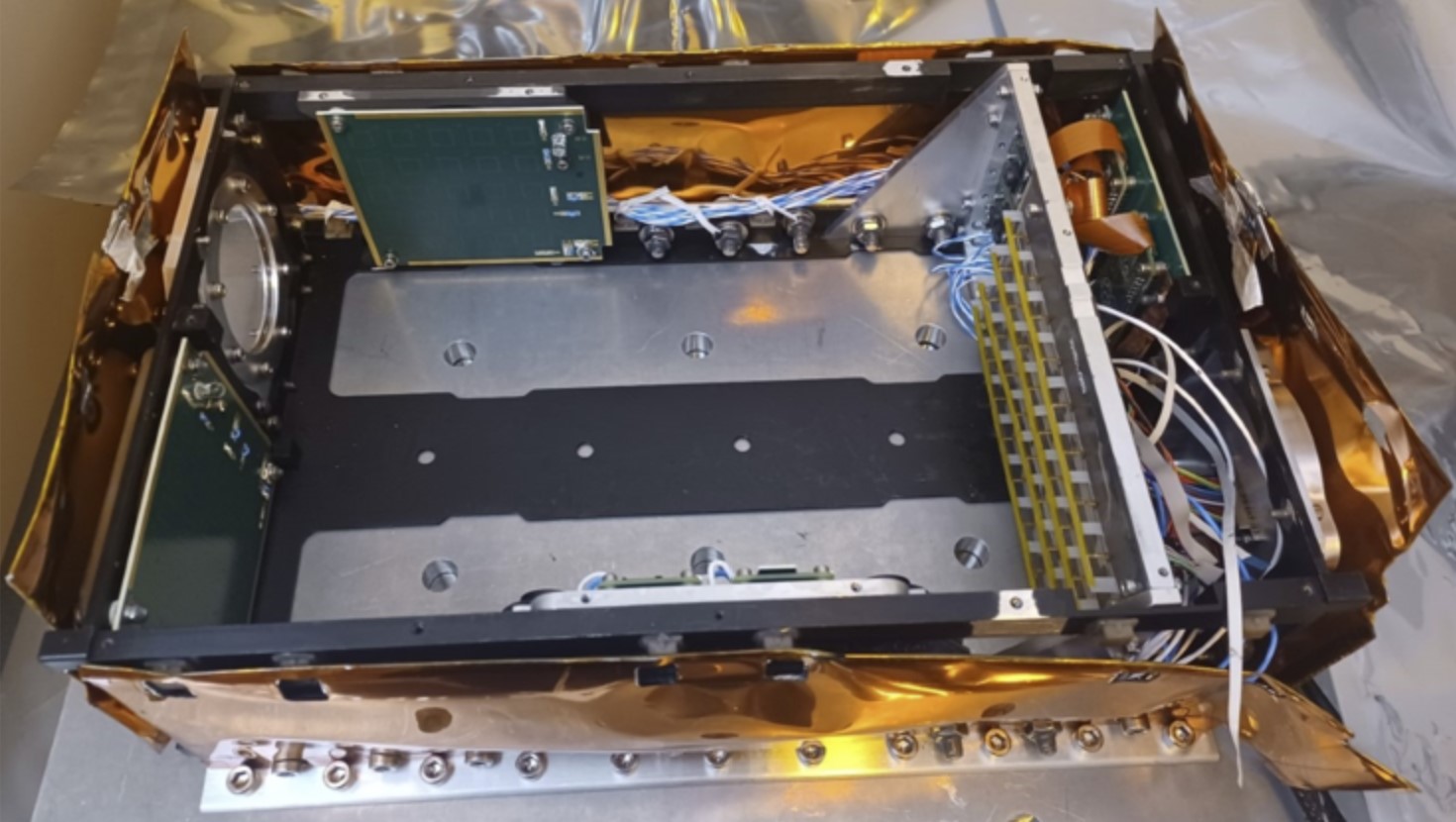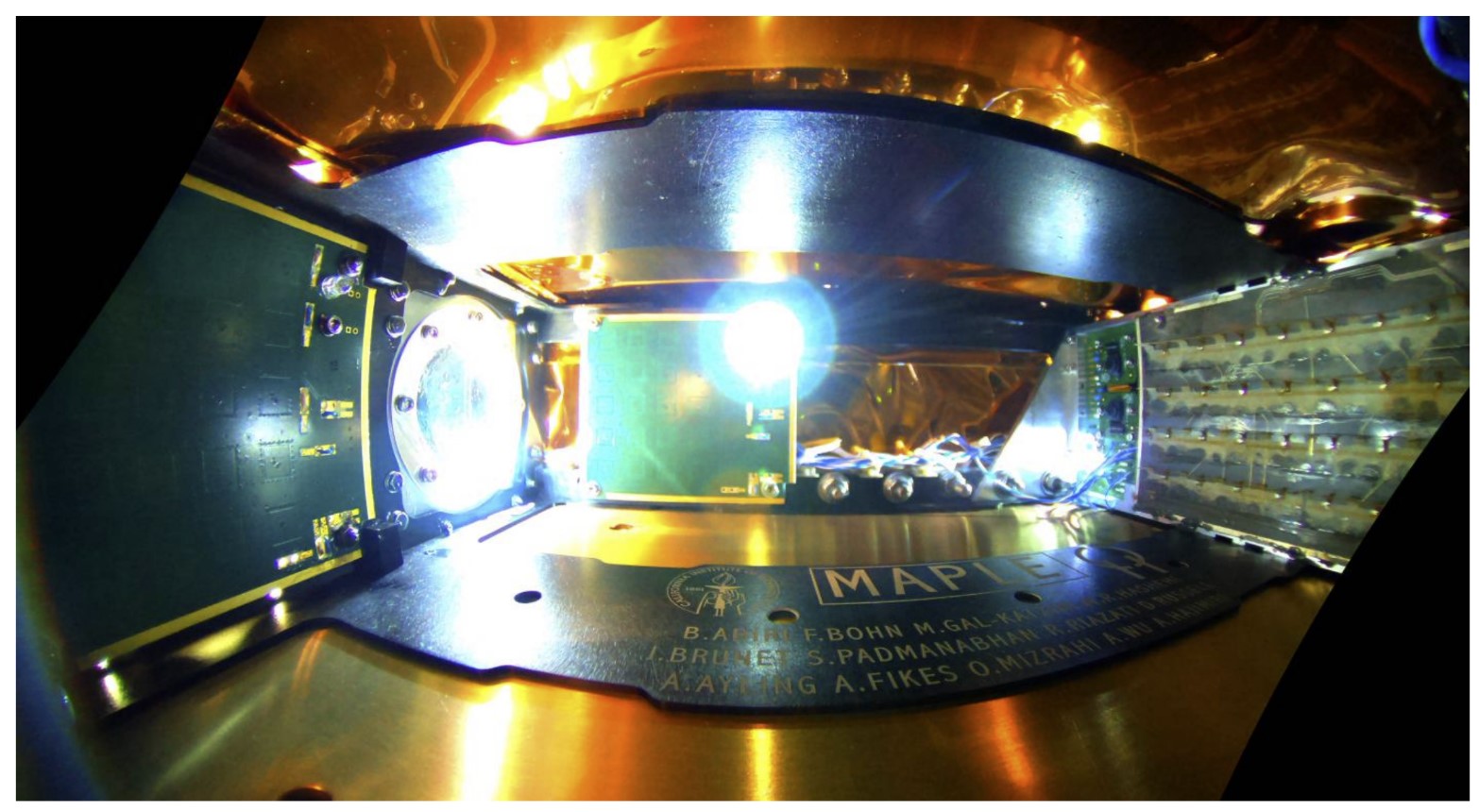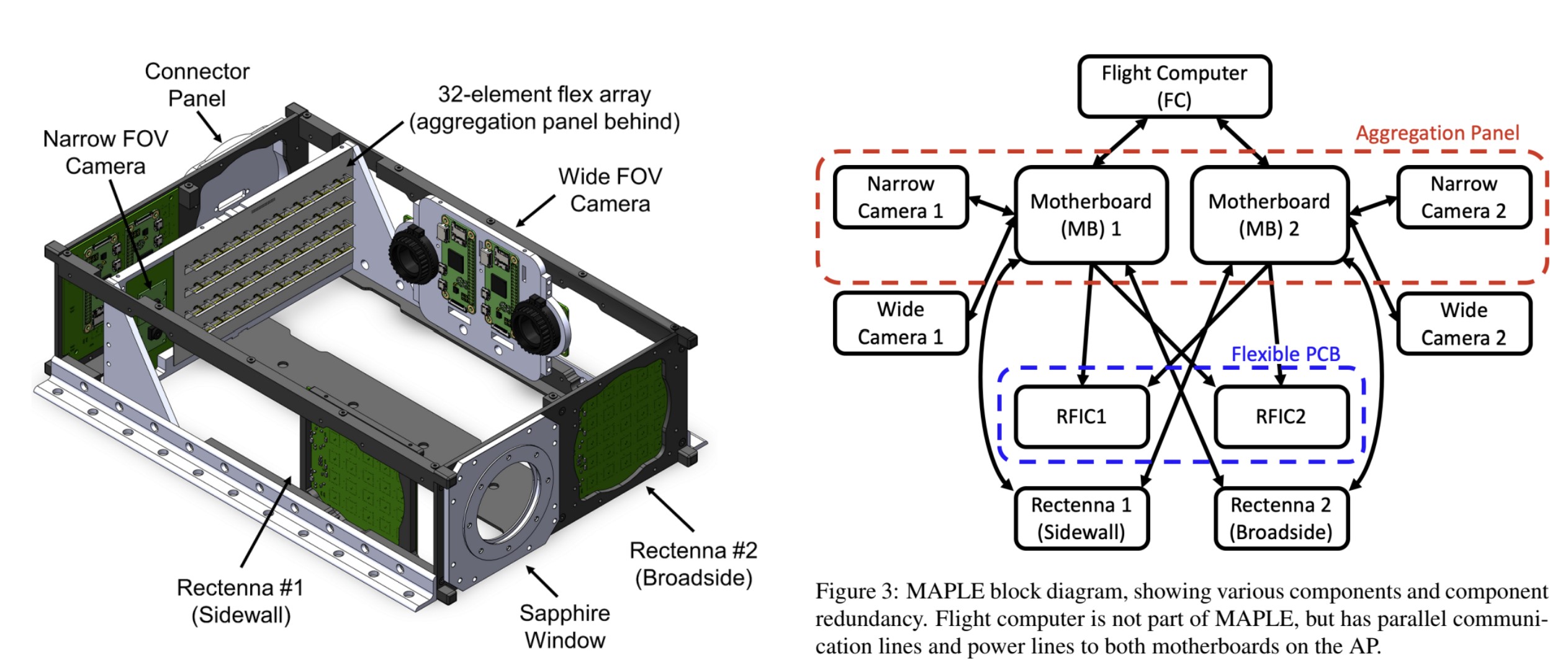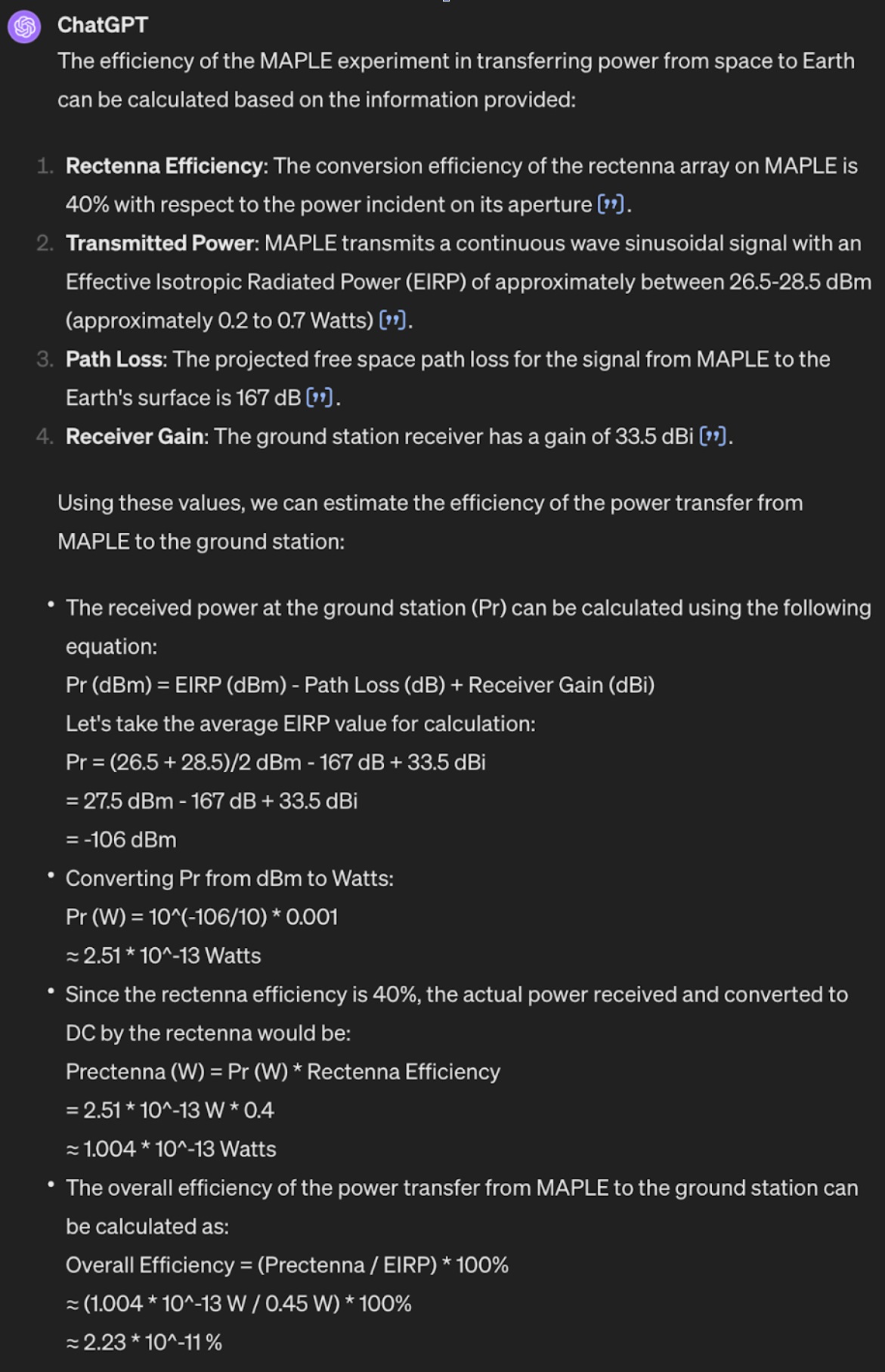Researchers have been attempting to beam solar power to earth in recent years, with some demonstrations showing the possibility is real. Pricing estimates for this source of electricity vary widely, with recent headlines from parties soliciting business with the U.S. Space Force suggesting that solar power could be delivered at $0.025/kWh, while a NASA document released in January, “Space-Based Solar Power” suggested a range between $0.61/kWh to $1.59/kWh.
The California Institute of Technology (CalTech) group that initially measured solar power being beamed from space released a paper on the topic, “Wireless Power Transfer in Space using Flexible, Lightweight, Coherent Arrays.”
In the most basic description, the solar panels on the satellite convert the sun’s photons into DC electricity, which the RF integrated circuit (RFIC) then turns into radio frequency (RF) power, which can be beamed to other space vehicles or to earth.

CalTech’s Microwave Array Power Transfer Low-earth-orbit Experiment (MAPLE) was designed to test the wireless transfer of electricity portion of the equation. The cube satellite was attached to a spacecraft last year, and tested successfully. In this case, the source of the electricity was the spacecraft’s – the Vigoride-5 spacecraft from Momentus, Inc. – solar panels.
In the future, the authors envision many of these systems deployed across an highly coordinated area of space, arranged and delivering energy as a phased array.
The project attempted three beam-to-Earth experiments, on May 23rd, 2023 UTC, June 30th, 2023 UTC, and July 28th, 2023 UTC. All three experiments were successfully detected. Specific measurements, including a Doppler shift and power level, aligned with orbital predictions and data from larger spacecraft. The researchers’ techniques improved with each measurement, with the final experiment providing the largest continuous set of data.

The main subcomponents of the MAPLE are:
– Two custom 16-channel silicon RFICs
– An array of 32 flexible co-cured dipole antennas
– A flexible printed circuit board (PCB) on which the RFICs and antennas are mounted (“flex array” or FA)
– A rigid PCB with voltage regulation, on-board telemetry, and redundant microcontrollers (“aggregation panel” or AP).
– Two rectenna arrays.
– Two narrow field-of-view cameras.
– Two wide field-of-view cameras.
The flexible PCB antennas and RFICs constitute the “GU array.” They are responsible for generating and transmitting RF power wirelessly. The rectennas receive the wirelessly transmitted RF power from the GU array and convert it to DC power. The microcontroller on the Main Board controls the execution of the focusing algorithm that continually controls and optimizes the actions of the RFICs and GU array.

Besides cost, one technical barrier that will need to be overcome is the loss in power that occurs in the transfer process (this is where the focused phase arrays come into play). pv magazine USA is not qualified to comment on the ideas associated with solving the efficiency program, nor how to calculate the efficiency – so we asked ChatGPT to read the paper linked to above and help describe the power efficiency of the system.

The end efficiency value is defined as being infinitesimally small, approximately 2.23 * 10-11 % (0.0000000000223%), or 22.3 trillionths of a percent. While the following comparison isn’t completely analogous, one can gain an order of magnitude: to reach the efficiency of a modern solar panel on Earth, which is around 20%, the overall efficiency would need to increase roughly five trillion times.
This content is protected by copyright and may not be reused. If you want to cooperate with us and would like to reuse some of our content, please contact: editors@pv-magazine.com.








-167dB loss is large. Were these the best frequencies to send? I thought the idea of power beaming had more promise than 167dB loss suggests.
I heard there is a new book by experts at NREL and elsewhere on Power Beaming Theory and Practice is coming out. Hope to learn more on this.